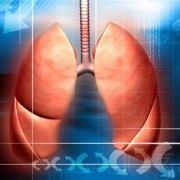Tuberculosis (too-bur-kyuh-LOH-suhss), or TB, is a disease caused by germs that are spread from person to person through the air. TB usually affects the lungs, but it can also affect other parts of the body, such as the brain, the kidneys, or the spine. A person with TB can die if they do not get treatment.
The general symptoms of TB disease include:
Feelings of sickness or weakness
Weight loss
Fever
Night sweats
Other symptoms of TB depend on the parts of the body affected. With TB of the lungs, symptoms also can include coughing, chest pain, and coughing up blood.
If you have symptoms of TB or if you have been around someone who has TB disease, go to your doctor or health department for tests. TB can be treated and cured.
Asian-Americans have the highest TB rates of any group in the United States. Their TB rates are about 22 times greater than the rate for non-Hispanic whites. Asian-Americans who have recently come to the United States have even higher rates. In the United States, people born overseas are about 11 times more likely to have TB than those born here. The good news is that TB rates have been going down. But, they are not going down as fast as they once were. So TB is still a serious health concern.
More resources on minority women's health





Add a CommentComments
There are no comments yet. Be the first one and get the conversation started!